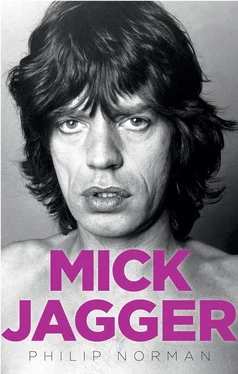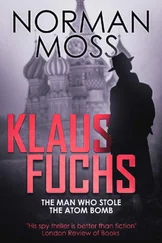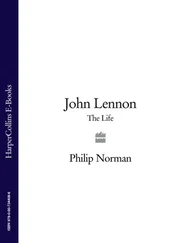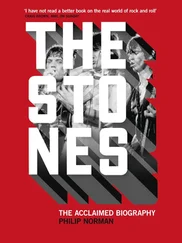With the Stones now launched as a pro band, however precariously, there clearly could no longer be two members with parallel occupations. Charlie Watts must leave his job with the advertising agency Charles, Hobson & Grey, and Mick his half-finished course at LSE. In truth, his attendance at lectures was by now so erratic that Andrew Oldham’s new associate, Tony Calder, barely realised he went there at all. ‘I knew Charlie had a day job that sometimes affected his getting to gigs,’ Calder remembers. ‘But with Mick, it was never an issue.’
By all the logic of the time, it seemed pure insanity to sacrifice a course at one of the country’s finest universities – and the career that would follow – to plunge into the unstable, unsavoury, overwhelmingly proletarian world of pop. The protests Mick faced from his parents, especially his voluble, socially sensitive mother, only articulated what he himself already knew only too well: that economists and lawyers were sure of well-remunerated employment for life, while the average career for pop artists up to then had been about six months.
One afternoon, when the Stones were appearing at Ken Colyer’s club in Soho, he told Chrissie that his mind was made up and he was leaving the LSE. ‘I didn’t get the feeling that he’d agonised very much about it,’ she remembers. ‘He certainly didn’t discuss it with me – but then my opinion wouldn’t have meant that much. I do remember that it was very upsetting to his father. To his mother, too, obviously, but the way it was always expressed was that “Joe is very upset.”’
The decision became easier when it proved not irrevocable. For all his recent lack of commitment, the LSE had clearly marked him down as something special and, with its traditional broad-mindedness, was prepared to regard turning pro with the Stones as a form of sabbatical or, as we would now say, gap year. After a ‘surprisingly easy’ interview with the college registrar, he would later recall, he was allowed to walk without recrimination or financial penalty, and reassured that if things didn’t work out with the Stones he could always come back and complete his degree.
It was not the best moment to be competing for British pop fans’ attention. That rainy summer of 1963 saw the Beatles change from mere teenage idols into the objects of a national, multi-generational psychosis, ‘Beatlemania’. Their chirpy Liverpool charm a perfect antidote to the upper-class sleaze of the Profumo Affair – for now, Britain’s most lurid modern sex scandal – they dominated the headlines day after day with their wacky (but hygienic) haircuts, the shrieking hysteria of their audiences and the ‘yeah yeah yeah’ chorus of their latest and biggest-ever single, ‘She Loves You’. Politicians mentioned them in Parliament, psychologists analysed them, clerics preached sermons on them, historians found precedents for them in ancient Greece or Rome; no less an authority than the classical music critic of ‘top people’s paper’ The Times dissected the emergent songwriting talent of John Lennon and Paul McCartney with a seriousness normally devoted to Mozart and Beethoven.
For the national press, which hitherto had virtually ignored pop music and its constituency except to criticise or lampoon, the Beatles were a circulation booster like nothing ever before. As a result, Fleet Street entered into an unspoken pact to print nothing negative about them, to keep the cotton-wool ball rolling as long as possible. Before the year’s end, they would top the bill on television’s prestigious Sunday Night at the London Palladium and duck their mop-tops respectfully before Queen Elizabeth the Queen Mother at the Royal Variety Show.
While the Beatles headed for the Palladium and the royal receiving line, the Rolling Stones, with only half a hit to their name, continued playing their circuit of little blues clubs, with the occasional débutante ball, for fees between £25 and £50. While the Beatles were fenced off by increasing numbers of police and security, the Stones still performed close enough to their fans for any to reach out and touch them. Among the newest of these was a Wimbledon schoolgirl named Jacqui Graham, in future life the publicity director of a major British publishing house. Fifteen-year-old Jacqui charted her developing obsession with twenty-year-old Mick in a diary that – rather like a 1960s version of Daisy Ashford’s The Young Visiters – combines eagle-eyed observation and the innocence of a bygone age:
How fab can anyone be! . . . I have just seen the Rolling Stones and they are endsville! Mick Jagger is definitely the best. Tall [sic], very, very thin, with terribly long hair he was gorgeous! Dressed in a shirt, a brown wool tie which he took off, brown cord trousers and soft squidgy chukka boots. He (or I’m pretty sure he did) kept looking at me – I was just in front of him so he couldn’t help it – & I wasn’t quite sure what to do! Keith Richard is marvellous-looking but he didn’t join in much, he only seemed human when one of his guitar-strings broke. He wore very long and tight grey trousers, shirt and black leather waistcoat. Brian Jones had lovely colour hair & was rather nice. Didn’t think much of Bill Wyman. Charlie Watts had a rather interesting face. Oh but when Mick and Keith looked at me – I’m sure they did. Must see them on Sunday. They really are good – my ears are still buzzing .
One August night when the Stones appeared at Richmond Athletic Ground – the Crawdaddy Club’s new, much-enlarged home – a production team from London’s Rediffusion TV company was there, recruiting audience members to take part in a new live Friday-evening pop show called Ready Steady Go! Its co-presenter was to be a twenty-year-old fashion journalist, and über-Mod, named Cathy McGowan, who belonged to the Stones’ regular Studio 51 following. And, after the show’s talent scouts had watched them at Richmond, they were booked for the show’s second broadcast, on 26 August.
Ready Steady Go! was a mould-breaking production, designed in every way to give a musical mould-breaker his first significant national exposure. Whereas previous TV pop shows like Drumbeat and Thank Your Lucky Stars had kept the young studio audiences firmly out of shot, this one made them integral to the action, dancing the newest go-go steps on a studio floor littered with exposed cameras and sound booms or mingling with the featured singers and bands as if they were all guests at one big party. London’s new allure was captured in the slogan flashed on-screen with the opening credits – ‘The Weekend Starts Here.’ Coincidentally, the programme was made at Rediffusion’s Kingsway headquarters, just around the corner from the London School of Economics.
The Rolling Stones on Ready Steady Go! showed Britain’s youth the real band behind that odd name and rather spiritless début single. Even though dressed in a kind of matching uniform – leather waistcoats, black trousers, white shirts and ties – and lip-synching to a backing track, they connected with their audience as instantaneously as at Richmond or on Eel Pie. Indeed, the resultant party atmosphere in the studio was a little too much even for RSG ’s lenient floor managers. After the Stones’ brief spot, so many shrieking girls waited to waylay them that they couldn’t leave the building by any normal exit. Instead, Mick’s alma mater provided an escape route, across the small back courtyard Rediffusion shared with LSE and into the student bar where so recently he’d sat in his striped college scarf, discussing Russell and Keynes and making a half pint of bitter last a whole evening.
Also in accordance with the beat-group style book (rule one: take all the work you can while it’s going), the Stones were launched on a series of one-nighters at the opposite extreme from the comfortable residencies to which they were accustomed. Distance was no object, and they frequently faced round-trips of two hundred miles or more in Ian Stewart’s Volkswagen van: no joke in an era when motorways were still a rarity and even two segregated traffic lanes were an occasion. These journeys often took them up north, the Jagger family’s original homeland – not that Mick ever showed any sign of nostalgia – through redbrick towns where streets were still cobbled, factories still hummed, coal pit-head wheels still turned and long-haired Londoners were gawped at like just-landed aliens.
Читать дальше












